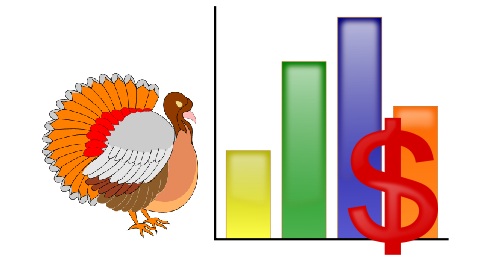Denny |
November 19, 2013
This, according to the execs at both The Weather Channel as well as at Criteo.
Execs from both The Weather Company – the operator of The Weather Channel – and from Criteo – an adtech platform – believe that as much as mobile marketing is growing in popularity and presents considerable opportunity for monetization of a website or an app, the ads that are used over this channel leave a great deal to be desired.
These two execs have agreed that it is primarily the format of the ads that needs to improve.
They have stated that the mobile marketing ad format continues to be riddled with flawed and time will require it to improve. That said, this is not quite an encouraging statement considering the fact that the channel has been heavily used, worldwide. It is also a rather grim statement considering that Criteo is a considerable buyer of m-commerce ads, and the Weather Channel is a large seller due to the great popularity of its app.
That said, despite the current statements, they do feel that mobile marketing will be the place to be in the long run.
 In a recent interview with a business publication, Greg Coleman, the president of Criteo, said “Do mobile ads suck? Maybe, maybe not.” He added that if you are able to encourage a viewer to click an ad, which he called, making an “ad dance”, then you can assume “that it doesn’t suck.”
In a recent interview with a business publication, Greg Coleman, the president of Criteo, said “Do mobile ads suck? Maybe, maybe not.” He added that if you are able to encourage a viewer to click an ad, which he called, making an “ad dance”, then you can assume “that it doesn’t suck.”
In order to be able to make better mobile marketing ads, according to Coleman, there is a requirement for the industry to look into the ads that have been made by curatives that have developed a smartphone based background and who have what is referred to as Coleman as the mobile “DNA”.
At the same time, The Weather Company’s chief global revenue officer, Curt Hecht, has expressed a different angle of view regarding the direction that mobile marketing was taking. In his opinion, considering the way that things currently are, the methods that are used for purchasing and selling ads over smartphones and tablets are what he called “a complete mess”. For a company that sells ad space on its apps, this isn’t the best type of statement to make.
The true start to the purchasing season over smartphones and tablets is expected to kick off on the holiday itself.
Although the tradition was once to get together with family on Thanksgiving day and to shop for deals on Black Friday, things have changed with the addition of m-commerce and the internet as a growing number of people finish their meals and sign on to start their bargain hunting right away.
The new attitude is that there is no reason to wait when they have the shop sitting right there in their hand.
M-commerce is not only redefining the way that people behave over the Thanksgiving holiday, but it is also turning holiday shopping patterns on their head. Every year, new trends are being identified and monitored in order to help to better predict what will happen the year afterward. As mobile commerce is a relatively new channel that is taking off very quickly, many retailers are scrambling to know what to do and when to place the main target on consumers.
This year, m-commerce trends suggest that retailers that wait for Cyber Monday may have waited too long.
 It isn’t that consumers won’t be signing on to the internet on Cyber Monday. In fact, the vast majority of online shoppers will likely focus on that day when they are sitting in front of their desktops and laptops – which represents most of the consumers that will be shopping online for deals. However, when it comes to the massively growing number of shoppers that will be buying their products and services over m-commerce, they may still be feeling stuffed from their turkey dinner when they use their smartphones and tablets to check out what’s available.
It isn’t that consumers won’t be signing on to the internet on Cyber Monday. In fact, the vast majority of online shoppers will likely focus on that day when they are sitting in front of their desktops and laptops – which represents most of the consumers that will be shopping online for deals. However, when it comes to the massively growing number of shoppers that will be buying their products and services over m-commerce, they may still be feeling stuffed from their turkey dinner when they use their smartphones and tablets to check out what’s available.
According to the principal analyst of digital index at Adobe, Tyler White, “The change happened when people had mobile devices in their hands. People want to be with their families, but if you’re bored with the football game, you start shopping. Mobile is driving the growth on Thanksgiving.” Though it is anticipated that retail revenue overall will likely remain flat this year, the sales that are occurring from Thanksgiving, Black Friday, and Cyber Monday are expected by Adobe to break records in its growth, particularly over m-commerce.
 In a recent interview with a business publication, Greg Coleman, the president of Criteo, said “Do mobile ads suck? Maybe, maybe not.” He added that if you are able to encourage a viewer to click an ad, which he called, making an “ad dance”, then you can assume “that it doesn’t suck.”
In a recent interview with a business publication, Greg Coleman, the president of Criteo, said “Do mobile ads suck? Maybe, maybe not.” He added that if you are able to encourage a viewer to click an ad, which he called, making an “ad dance”, then you can assume “that it doesn’t suck.”
 It isn’t that consumers won’t be signing on to the internet on Cyber Monday. In fact, the vast majority of online shoppers will likely focus on that day when they are sitting in front of their desktops and laptops – which represents most of the consumers that will be shopping online for deals. However, when it comes to the massively growing number of shoppers that will be buying their products and services over m-commerce, they may still be feeling stuffed from their turkey dinner when they use their smartphones and tablets to check out what’s available.
It isn’t that consumers won’t be signing on to the internet on Cyber Monday. In fact, the vast majority of online shoppers will likely focus on that day when they are sitting in front of their desktops and laptops – which represents most of the consumers that will be shopping online for deals. However, when it comes to the massively growing number of shoppers that will be buying their products and services over m-commerce, they may still be feeling stuffed from their turkey dinner when they use their smartphones and tablets to check out what’s available.